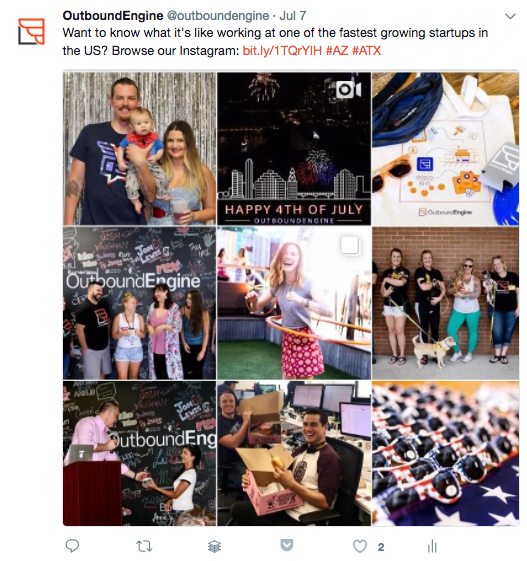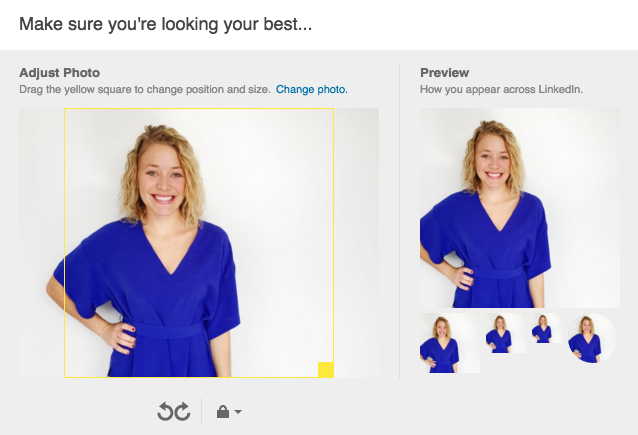It’s easy to get overwhelmed and not know where to channel your energy when it comes to online marketing, particularly with so much information out there and a surplus of distractions following close behind.
We’ve simplified it for you by creating eight online marketing goals that will keep you on the right track. There’s a chance you’ve already tackled a few of these items, but regardless of where you are in the journey, we encourage you to keep pushing forward with your online marketing efforts. It really is worth the investment. In fact, after two years of building a presence online with social media marketing, the majority of business owners report an increase in sales.
Bonus Content: Snag one of our handy Marketing Survival Kits.
1. Create Accounts on Twitter, Facebook and LinkedIn
Social platforms abound, but the Big Three — Facebook, LinkedIn and Twitter — are essential for businesses, providing communication lines to past, present and future customers. Twitter is a tool used to share short bursts of information in a compact package of 140 characters or less. Facebook allows for longer-form text posts, but photos and videos posts are important too. This platform is also useful for interacting with your followers through likes, comments and shares.
LinkedIn is vital for building your business network, plus it can also serve as a third connection point with customers — both as a professional and as a business. Not only does LinkedIn serve as an online resume, but it’s also a popular long-form publishing platform for industry-related blog content, which is useful for establishing your expertise.
2. Add Social Media Icons to Your Website
Whenever we come across a business website, we tend to browse around for information and eventually make a beeline for social media icons. Why? Social media is the fastest way to see what kind of information a business shares, who the customers are, and how the customer and business interact. This type of business vetting helps build a sense of trust through the comfort of a smartphone, tablet or computer.
Business owners should keep this in mind as they design their website and create social media content. The goal is to stay top of mind with followers so they will know who to turn to when they’re ready. Having convenient social media icons on your site gives visitors an effortless way to access that useful social media content.
3. Post Profile and Cover Photos on All Three Accounts
Your profile photo is one of the most important pieces of your online social presence. It’s part of your online identity. Everything you post will be tied to your profile photo. If you use a logo, make sure the image is high quality and recognizable, and if text is a part of your logo, be sure that it’s readable in all of the forms it will appear. LinkedIn is a great place to test this out for a preview of how your profile picture will appear across the network.
As for your cover photo, think of it as the first big impression you make on someone when they visit your page. You want your image to be high quality (mentioned twice because it’s that important) and consistent with your brand’s look and feel. And don’t let your cover photo go stale; update it regularly across social media platforms to tie in with any campaigns you’re running or to reflect the changing seasons. Think of your cover image as a sort of online storefront.
4. Set Reminders to Post Regularly to Facebook and Twitter
It’s no good having social accounts if you forget to use them. If you’re just getting started, aim for once a week and ramp up from there as you get more comfortable posting. Take the time to put together a content calendar that outlines when and what you intend to post to each platform. It will keep your organized and prevent you from coming up with writer’s block when it’s time to post something.
Be sure to include sharing alternative types of content as part of your social media strategy as well. Share interesting articles you find on the web, photos of products or behind-the-scenes snaps. If you have a blog, social media is an excellent way to spread that content.
5. Follow Relevant People on Each Platform
Social media isn’t just about spreading your marketing messages and getting people to follow you; it’s also a place for building community. Start with other local businesses, industry experts and professionals you admire. You may even want to follow some of your most loyal customers. Each platform is different as far as who and how you can connect, but one thing is for sure: there’s no shortage of connections waiting to be made.
Also keep in mind that all of the people and businesses you follow will become a fantastic source for the latest industry buzz, helpful information and shareable content. Just make sure you’re sharing a healthy ratio of original content too.
6. Cross Promote Your Social Accounts
These days we consume information from a multitude of sources, often switching from one app to the next on our phones. A quick way to increase your following is to simply let those who are already following you know that you’re on other platforms as well. The more connected someone is with your business, the more likely you are to remain top of mind and receive a referral.

7. Export Your LinkedIn Contacts to Grow Your Email List
Trying to figure out who you should be reaching out to? How about the people you’re already connecting with online? The LinkedIn Export Tool is a handy extension for the Google Chrome browser that replaces the tedious job of transporting the email address of every single LinkedIn contact to your email list.
Don’t have an email newsletter? You should, but that’s too big a topic to include on this list. Read more about the impact email newsletters can have on businesses.
8. Claim Your Yelp Page
If your business has been around for a while, there’s likely a Yelp page out there that has your business name on it. If one doesn’t exist, it should! Online reviews are powerful. Don’t believe us? How about this: 88 percent of consumers trust reviews they read online as much as they would a personal recommendation from a friend or family member, and 72 percent trust a business more after reading a positive review.
While Facebook does offer users the opportunity to write reviews, most people are on autopilot and turn to Yelp to check out the trustworthiness of a business. Do yourself a favor and let your happy customers know you have a Yelp page and tell them how much you would appreciate their feedback and reviews.
Wrap-up
If you’re new to online marketing, use this beginner-friendly checklist as a resource to get started. If your marketing strategy is well underway, check on your progress by seeing how many of these tasks have already been crossed off your list.
- Create accounts on Twitter, Facebook and LinkedIn.
- Add social media icons to your website.
- Post profile and cover photos on all three accounts.
- Set reminders to post regularly to Facebook and Twitter.
- Find 30 people to follow on each platform.
- Cross promote your social accounts.
- Export your LinkedIn contacts to grow your email list.
- Claim your Yelp page.
That’s it — just a few simple steps to start building an open line of communication with your customers. Online marketing may feel like a lot of work to a business owner, but it will pay off in the long run. And the more you keep at it, the easier it gets!
Updated 9/13/17; Originally published 12/15/15




![Better Email Etiquette Equals Better Marketing Results [16 Rules]](https://www.outboundengine.com/wp-content/uploads/shutterstock_411184843-1-400x250.jpg)

